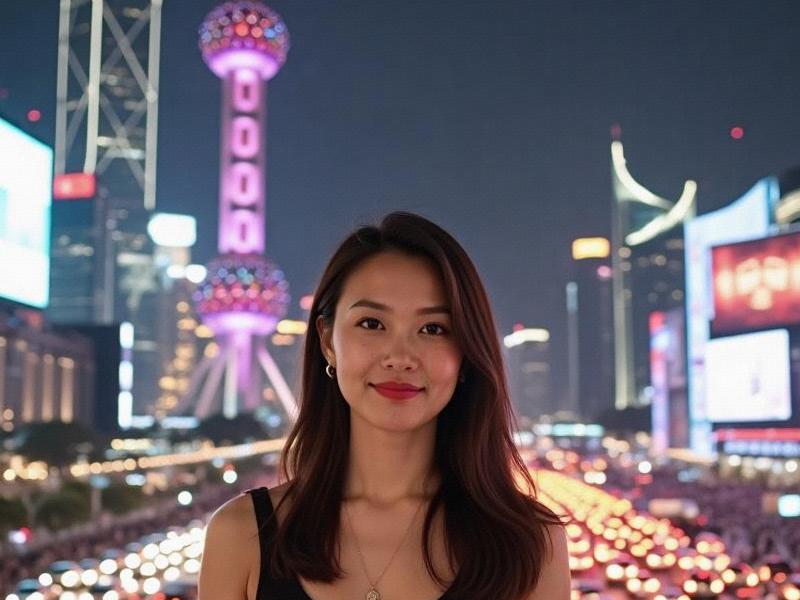This investigative report examines how Shanghai's entertainment club industry has evolved from underground nightspots to legitimate high-end hospitality businesses, becoming a $3.8 billion segment of the city's service economy while navigating complex regulations and changing consumer demands.

The neon lights of Shanghai's Huangpu District cast a kaleidoscopic glow on the black Mercedes S-Class sedans lining up outside Muse 2, one of the city's most exclusive members-only clubs. Inside, a carefully choreographed spectacle unfolds - mixologists crafting bespoke cocktails with rare Chinese baijiu, private karaoke rooms equipped with AI-powered voice enhancement systems, and discreet VIP areas where business deals worth millions are negotiated over vintage cognac. This is the new face of Shanghai's entertainment club industry - a far cry from its controversial past.
Historical Context
Four evolutionary phases of Shanghai's club scene:
1. Jazz Age Beginnings (1920s-1940s)
- Birth of nightclub culture in French Concession
- Legendary venues like Paramount Ballroom
- Mix of Western jazz and Chinese cabaret
2. Socialist Dormancy (1950s-1970s)
- Suppression of commercial entertainment
- State-owned cultural palaces
- Revolutionary performance troupes
3. Reform Era Revival (1980s-2000s)
- Taiwan/Hong Kong investment influx
- Rise of KTV culture
- Underground dance clubs
4. Modern Professionalization (2010-present)
- Luxury service standards
- Corporate ownership models
- Integration with hospitality chains
Current Market Structure
Shanghai's entertainment venue hierarchy:
爱上海419论坛 - Ultra-Luxury Clubs (Entry fees exceeding ¥10,000)
- Example: M1NT, Bar Rouge
- Client profile: Business elites, celebrities
- Features: Helicopter access, wine cellars
- High-End KTV Chains
- Example: Party World, Cashbox
- Client profile: Corporate groups
- Features: Professional sound systems, themed rooms
- Lounge-Style Clubs
- Example: The Nest, Flair
- Client profile: Expats, young professionals
- Features: Craft cocktails, skyline views
- Niche Entertainment Spaces
- Example: Mao Livehouse, Arkham
- Client profile: Music subcultures
- Features: Underground artists, indie labels
Economic Impact
Key industry statistics:
- Total market value: ¥24 billion ($3.8B)
- Employment: 120,000 direct jobs
- Nighttime economy contribution: 18%
上海龙凤阿拉后花园 - Luxury beverage consumption: 32% of national total
- Real estate premium: 45% higher near entertainment zones
Cultural Significance
Social functions of clubs:
- Business networking hubs
- Cross-cultural exchange spaces
- Music/art talent incubators
- Fashion trend laboratories
- Status display arenas
Regulatory Environment
Recent policy developments:
- 2022 Nighttime Economy Promotion Plan
- Stricter licensing requirements
- Mandatory closing times (2AM)
- Anti-corruption monitoring systems
- Tourism integration initiatives
Technological Integration
Innovations reshaping the experience:
- Facial recognition entry systems
- AI drink recommendation engines
- Holographic performance stages
- Blockchain membership programs
上海龙凤419手机 - Air purification systems
Future Trends
Emerging industry shifts:
1. Experience Premiumization
- Bespoke entertainment packages
- Celebrity chef collaborations
- Immersive theme nights
2. Corporate Consolidation
- Major hospitality group acquisitions
- Standardized service protocols
- National brand expansion
3. Cultural Localization
- Modernized traditional elements
- Shanghainese cultural motifs
- Heritage cocktail programs
4. Sustainable Operations
- Zero-waste mixology
- Energy-efficient venues
- Ethical sourcing policies
As Shanghai positions itself as a global capital, its entertainment clubs have become unexpected ambassadors - spaces where Chinese hospitality traditions meet international luxury standards, where guanxi networking blends with contemporary business practices, and where the city's complex identity finds expression after dark. The next challenge? Maintaining this delicate balance as consumption patterns evolve and regulatory scrutiny intensifies in China's most cosmopolitan city.